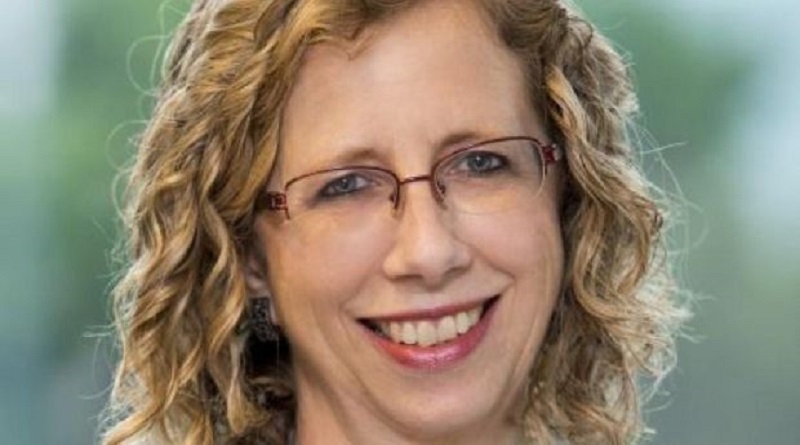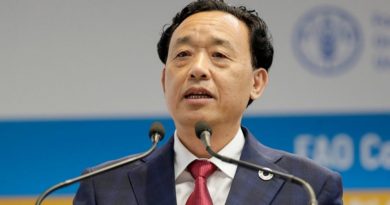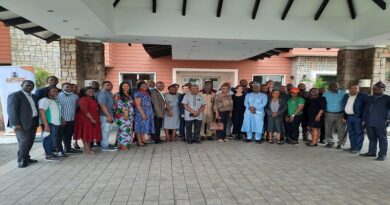Pursuing healthy nature and a stable climate to leave no one behind
Speech delivered by United Nations Environment Programme (UNEP) Executive Secretary, Inger Andersen, at the 162nd meeting of the Committee of Permanent Representatives held in Nairobi, Kenya
Your excellency, Ambassador Pirkka Tapiola, Chair of the Committee of Permanent Representatives,
Ambassadors and colleagues.
The world is at a critical point for the Sustainable Development Goals (SDGs). The clock has struck halfway to 2030, at which point no one is supposed to be left behind. But many people are being left behind.
Almost 90 per cent of the SDGs are off track, have shown no movement or have regressed. By 2030, close to 700 million people are predicted to be hungry, over 500 million people are expected to be living in extreme poverty, and over 600 million people are likely to remain without electricity. Inequality gaps – in gender, wealth and education – are not closing. Action on the triple planetary crisis – the crisis of climate change, the crisis of nature and biodiversity loss, and the crisis of pollution and waste – is too weak.
Amidst this backdrop, the SDG Summit in September must deliver increased commitment, increased solidarity, increased financing and increased action. UNEP is committed to helping to deliver on the SDGs by tackling the triple planetary crisis.
In May, I visited Blantyre in Malawi, which was devastated by Tropical Cyclone Freddy. What hope do such communities have of sustainable development when climate-linked extreme weather destroys their lives? And what hope do the people of Sudan, Ukraine and other countries have of sustainable development when war creates humanitarian and environmental catastrophes that linger long after the guns fall silent?
Only by living in harmony with nature in a net-zero, pollution-free world can we as humanity have a real shot at ending hunger and poverty, building peace and stability, ensuring clean energy and green jobs, and delivering equity and justice. So, the focus of the Medium-Term Strategy 2022-2025 is clear: holding up the environmental end of the bargain so that sustainable development becomes possible. This focus must remain in the 2026-2029 strategy.
A stronger UNEP will be crucial to delivering. Over the last four years, UNEP has become stronger on project financing. In April, UNEP submitted its largest-ever Global Environment Facility (GEF) portfolio. With US$350 million across 54 proposed projects, these submissions promise to deliver urgent action on climate, nature and pollution. But UNEP also needs to be strengthened beyond projects. The three new thematic funds are UNEP’s response to this reality. My thanks to Belgium, Finland and Norway for contributing to the three funds. In the same breath, let me stress the need to increase the number of contributors and for countries to pay their indicative scale of assessment. This is an issue on today’s agenda.
The next UN Environment Assembly (UNEA) will also be crucial. The UNEA Presidency will hold its first informal consultations on the zero draft ministerial declaration next week. The secretariat is drafting progress reports on the implementation of previous resolutions, preparing guidelines on the submission of draft resolutions and decisions, and undertaking other preparatory work that will allow Member States to take meaningful decisions in support of sustainable development at UNEA-6.
Excellencies,
Since we last met, there have been milestones, within UNEP and beyond.
On Climate Action, the Intergovernmental Panel on Climate Change (IPCC) Synthesis Report in March pointed to the urgent work the world must do before, during and after the UN Climate Action Summit and COP28 in the United Arab Emirates.
The UN General Assembly passed a historic resolution requesting an opinion from the International Court of Justice on states’ obligations under international law to combat climate change.
UNEP is proudly supporting Kenya as it prepares to co-host the September Africa Climate Summit with the African Union – an important moment to shape the continent’s climate response.
UNEP will also host the 59th session of the IPCC here in Nairobi, from 25-27 July 2023. This session will mark the start of the seventh IPCC cycle (AR7).
Work has begun on creating a new UNEP division dedicated to climate action. The goal is to create coherency in UNEP’s work on mitigation, adaptation and loss and damage. And to provide stronger support to Member States as they act on the climate emergency.
On Nature Action, UNEP chaired the Quadripartite for One Health for the first time, presenting a four-pillar strategy to strengthen collaboration. UNEP engaged strongly with the UN Water Conference – including promoting the UNEA resolution on Sustainable Lake Management, organized with the Government of Indonesia.
The big-ticket item for nature remains translating the Kunming-Montreal Global Biodiversity Framework into action. UNEP is proud to be supporting 69 countries under the GEF early action support to the Framework. Getting biodiversity right will require relentless drive. Drive to ensure the biodiversity fund is impactful. Drive to make National Biodiversity Strategies and Action Plans focused, digitally savvy and comparable so they can add-up to transformative global action. Drive to make full use of the Common Approach to Biodiversity within the UN system.
On Chemicals and Pollution Action, the second meeting of the Intergovernmental Negotiating Committee on plastic pollution, held in Paris in May, delivered a mandate to the Chair to prepare a zero draft of the instrument. This clears the way to make real progress in Nairobi at INC-3 later this year. Real progress by making difficult choices upfront. Real progress by focusing on eliminating unnecessary plastic. Real progress by focusing on the redesign of products, packaging and processes. Real progress by focusing on a just transition, including for the 20 million waste pickers around the world.
World Environment Day also focused on plastic pollution. My thanks to Cote d’Ivoire for hosting celebrations and to the Kingdom of the Netherlands for its support. Multilingual content was seen an estimated 200 million times on UNEP’s social media channels, while videos clocked up over five million views.
The first international day of zero waste, held on March 30 and facilitated by UNEP and UN-Habitat, also saw hundreds of official events around the world.
The Basel, Rotterdam and Stockholm conventions COPs, held from 1-12 May in Geneva, took 54 decisions to strengthen the sound management of chemicals and waste. And we look forward to the fifth International Conference on Chemicals Management in Bonn this September, where we expect great progress on the sound management of chemicals.
Excellencies,
Let us look at the broad strokes of how, during my second term, UNEP will pursue better delivery across the triple planetary crisis and the 2030 Agenda, with the UN 2.0 Quintet of Change firmly in mind.
UNEP is putting in place a strategic foresight approach to anticipate developments and disruptions. As a first step, UNEP is undertaking a horizon scanning process through a survey sent to 5,000 diverse specialists, member states, major groups and stakeholders, and UNEP staff. UNEP intends to produce a global foresight report in 2024 and will have an initial mapping of signals of change available by UNEA-6.
UNEP is strengthening its work on data. The World Environment Situation Room (WESR) is becoming a global brand that can provide quick, actionable policy insights. To make this a true corporate tool, I have reassigned responsibility to the Chief Digital Officer.
UNEP will continue to share evidence-based environmental information on important topics to contribute to the global conversation. UNEP will work through international platforms – including the G20 – to ensure that environmental science can help inform policy and financing decisions.
UNEP is continuing to strengthen ties with the UN system and Resident Coordinators. For example, through engagement in country teams, through the provision of environmental insight and through programmatic collaboration with sister agencies. UNEP’s voice in New York is heard, sought and appreciated by Member States. UNEP’s voice at UN policy level is strengthened through chairing the High-Level Committee on Programmes, with strong representation in New York.
This, and more, helps UNEP to promote coherent implementation of the environmental dimension of sustainable development within the UN system and to put in a place smarter machinery at the service of Member States. There might be ways to elevate the environment further within the multilateral system; in this regard I note the proposals by the High-Level Advisory Board on Effective Multilateralism, published in April.
UNEP’s updated delivery model aims at better servicing Member States. The model provides a clear division of labour between divisions and regions. The model allows for deployment of deep knowledge across the house. The model avoids overlap and clarifies accountability. The model equips us better to hear and respond to country demands.
UNEP continues to pursue geographically diversity, to better represent the interests of the whole world.
The new Young Talent Pipeline, which seeks to recruit young professionals from Africa, Asia-Pacific, Eastern Europe, and Latin America and the Caribbean, closed on May 15, with over 4,000 applicants. During my June visit to the Western Balkans, meanwhile, the Chief of Human Resources Management and I spoke to young professionals about employment opportunities.
Colleagues,
UNEP is working hard to live up to the Stockholm+50 and UNEP@50 promises of pursuing a healthy planet as a prerequisite for peaceful, cohesive and prosperous societies. Time is against us, yes. But on our side is a growing commitment to change, typified by many of the people in this room.
Thank you for your efforts and for supporting UNEP to support you. I look forward to working with the new bureau members.




